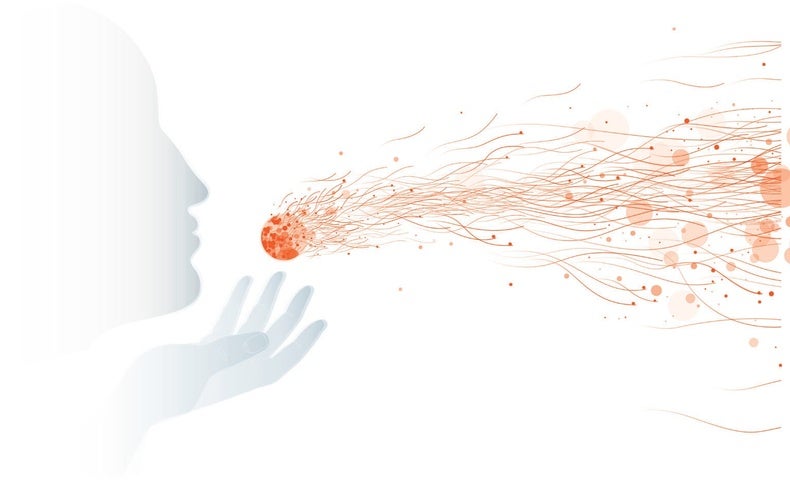I have spent much of my career studying ways to blunt the effects of disinformation and help the public make sense of the complexities of politics and science. When my colleagues and I probed the relation between the consumption of misinformation and the embrace, or dismissal, of protective behaviors that will ultimately stop the coronavirus’s spread, the results were clear: Those who believe false ideas and conspiracy theories about COVID-19 and vaccines are less likely to engage in mask wearing, social distancing, hand washing and vaccination.
In the midst of a raging pandemic, the importance of science communication is indisputable. Mention “science communication,” though, and what comes to mind in this context are public service announcements touting the 3 Ws (Wear a mask, Watch your distance, Wash your hands) or the FAQ pages of the Centers for Disease Control and Prevention. Ask someone what “science communicator” evokes, and responses might include a family physician and experts such as Anthony S. Fauci, director of the National Institute of Allergy and Infectious Diseases, and CNN’s Sanjay Gupta, who appear so regularly on our screens that we think of them as friends. But Fauci isn’t on your family Zoom call when a cousin mistakenly asserts that the CDC has found that wearing a mask makes you more likely to get COVID-19. Nor is Gupta at the ready when your friend’s daughter wonders whether the COVID vaccine contains microchips designed to track us.
It matters how we respond in these moments. As Cailin O’Connor and James Owen Weatherall wrote in this magazine in 2019, the “social transmission of knowledge is at the heart of culture and science.” In a large-scale online social network experiment conducted in 2018, Doug Guilbeault and Damon Centola, both then at the University of Pennsylvania’s Annenberg School for Communication, confirmed that power. When smokers and nonsmokers collaboratively evaluated antismoking messages, the smokers were more likely to acknowledge the harms of tobacco use than the smokers who evaluated the messages on their own.
Similarly Sally Chan and Dolores Albarracin of the University of Illinois at Urbana-Champaign and I found that the level of Twitter chatter from November 2018 through February 2019 about “vaccine fraud” in the counties of our roughly 3,000 panelists were associated with negative attitudes and lower rates of flu vaccination among them later in the year. But those worrisome effects did not occur among people who reported discussing vaccines with family and friends.
https://static.scientificamerican.com/sciam/cache/file/CF54EB21-65FD-4978-9EEF80245C772996_source.jpg" data-newsletterpromo_article-button-text="Sign Up" data-newsletterpromo_article-button-link="
https://www.scientificamerican.com/page/newsletter-sign-up/?origincode=2018_sciam_ArticlePromo_NewsletterSignUp">
Indeed, a sibling or a friend online or next door is in some ways better able to underscore the importance of behaviors such as masking and physical distancing than public health agencies or experts such as Fauci. It’s not only that we trust information from knowledgeable people who are close to us but that those in our lives can find opportune moments to explain why preventive behaviors are important to them and why they trust the science that says those actions reduce the spread of the virus.
A neighbor or a friend can respond with messages tailored to a person’s interests and concerns. In addition to correcting misconceptions in real time, a confidant can create an environment inhospitable to misinformation in the first place. Finally, and critically, deception and debunking usually occur in different venues: those who are exposed to misconceptions rarely encounter the fact-checks.
https://static.scientificamerican.com/sciam/cache/file/CF54EB21-65FD-4978-9EEF80245C772996_source.jpg" data-newsletterpromo_article-button-text="Sign Up" data-newsletterpromo_article-button-link="
https://www.scientificamerican.com/page/newsletter-sign-up/?origincode=2018_sciam_ArticlePromo_NewsletterSignUp">
https://static.scientificamerican.com/sciam/cache/file/CF54EB21-65FD-4978-9EEF80245C772996_source.jpg" data-newsletterpromo_article-button-text="Sign Up" data-newsletterpromo_article-button-link="
https://www.scientificamerican.com/page/newsletter-sign-up/?origincode=2018_sciam_ArticlePromo_NewsletterSignUp">




Recent Comments